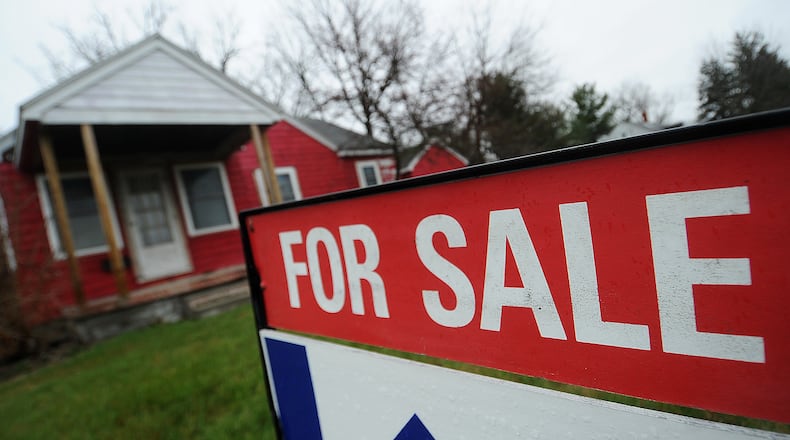The Mortgage Bankers Association spent a week responding to misinformation on what the pricing framework means for borrowers, MBA spokesman Adam DeSanctis said last week.
DeSanctis said MBA countered the misleading assertions that low credit-score, low-down payment borrowers will get better rates than more qualified borrowers as of May 1.
“That is not true, he said. “MBA has stressed that contrary to the inaccurate reporting and the resulting hyperbole, the fees have been in the market since March and that borrowers with higher credit scores will still pay less than those with a lower credit score with the same down payment.”
How the system works
Fannie and Freddie guarantee the payment of principal and interest on their mortgage-backed securities, and they charge mortgage borrowers who use a conventional mortgage an upfront mortgage fee known as a loan-level pricing adjustment, or LLPA, for providing that guarantee, FHFA said.
The size of the fee is based on the borrower’s level of risk, including credit rating and the size of the down-payment amounts. Its cost is typically added to the loan by increasing its interest rate.
FHFA said “the new fee matrices consist of three base grids by loan purpose for purchase, rate-term refinance, and cash-out refinance loans — recalibrated to new credit score and loan-to-value ratio categories — along with associated loan attributes for each.”
FHFA Director Sandra Thompson said much of what has been reported advances a fundamental misunderstanding about the fees charged by Fannie Mae and Freddie Mac and why they were updated.
“Higher-credit-score borrowers are not being charged more so that lower-credit-score borrowers can pay less,” Thompson said in a statement. “The updated fees, as was true of the prior fees, generally increase as credit scores decrease for any given level of down payment.”
Republican leaders dislike change
Not everyone is convinced that the new fees are fair, saying they drop fees for some borrowers with lower credit scores and increased for some with higher scores.
A group of Senate Republicans accused the Federal Housing Finance Agency in an April letter that the change will “enshrine a system that willfully ignores the realities of creditworthiness in an effort to push Americans into homes they may be ill-suited to afford.”
Thompson, of FHFA, said some updated fees are higher and some are lower, in differing amounts, and they do not represent pure decreases for high-risk borrowers or pure increases for low-risk borrowers.
“Many borrowers with high credit scores or large down payments will see their fees decrease or remain flat,” Thompson said.
Thompson said the new framework does not provide incentives for a borrower to make a lower down payment to benefit from lower fees.
“Borrowers making a down payment smaller than 20% of the home’s value typically pay mortgage insurance premiums, so these must be added to the fees charged by the Enterprises (Fannie Mae and Freddie Mac) when considering a borrower’s total costs,” she said.
Rep. Patrick McHenry, R, North Carolina, chair of the House Financial Services Committee, and Rep. Warren Davidson, R-Troy, chair of the Subcommittee on Housing and Insurance, claimed in an April 25 letter to Thompson that Fannie Mae and Freddie Mac implemented LLPAs as a risk-based pricing tool to encourage responsible lending and to protect taxpayers from undue risk.
However, they said the changes mandated by FHFA will achieve the opposite result.
“These changes violate the fundamental principle of risk-based pricing, namely that lower-risk borrowers should pay lower prices for access to credit than higher-risk borrowers,” Davidson and McHenry said. “There is no doubt that lenders will pass on the new LLPA costs to borrowers, which will result in higher mortgage rates and reduced access to credit.”
They said the House Financial Services Committee would attempt to have the new fees repealed if Thompson didn’t reverse the change and eliminate the tax.
Thompson said the targeted eliminations of up-front fees for borrowers with lower incomes — not lower credit scores — primarily are supported by the higher fees on products such as second homes and cash-out refinances. She added that Fannie Mae and Freddie Mac’s statutory charters “specifically include references to supporting low- and moderate-income families by earning returns on mortgages for these borrowers that may be less than the returns earned on other products.”
National, local housing market update
The average long-term U.S. mortgage rate edged lower last week, a modest boost for homebuyers looking for relief as a stubbornly low inventory of properties for sale fuels bidding wars in many markets.
The average rate on the benchmark 30-year fixed-rate home loan fell to 6.39% from 6.43% last week, Freddie Mac said Thursday. A year ago, it averaged 5.27%. The average rate fell for five straight weeks before rising the last two weeks of April.
“Spring is typically the busiest season for the residential housing market, and despite rates hovering in the mid-six percent range, this year is no different‚” Sam Khater, Freddie Mac’s chief economist, said last week. “Interested homebuyers are acclimating to the current rate environment, but the lack of inventory remains a primary obstacle to affordability.”
Sales of previously occupied U.S. homes fell 2.4% from February to March and were down 22% from a year earlier, according to the National Association of Realtors.
Dayton-area home sales have been sinking in recent months compared to last year, according to Dayton Realtors Multiple Listing Service. Local home and condo transactions declined 10.6% in March, the seventh consecutive month of decreases in year-over year sales.
The Associated Press contributed to this report.
About the Author

